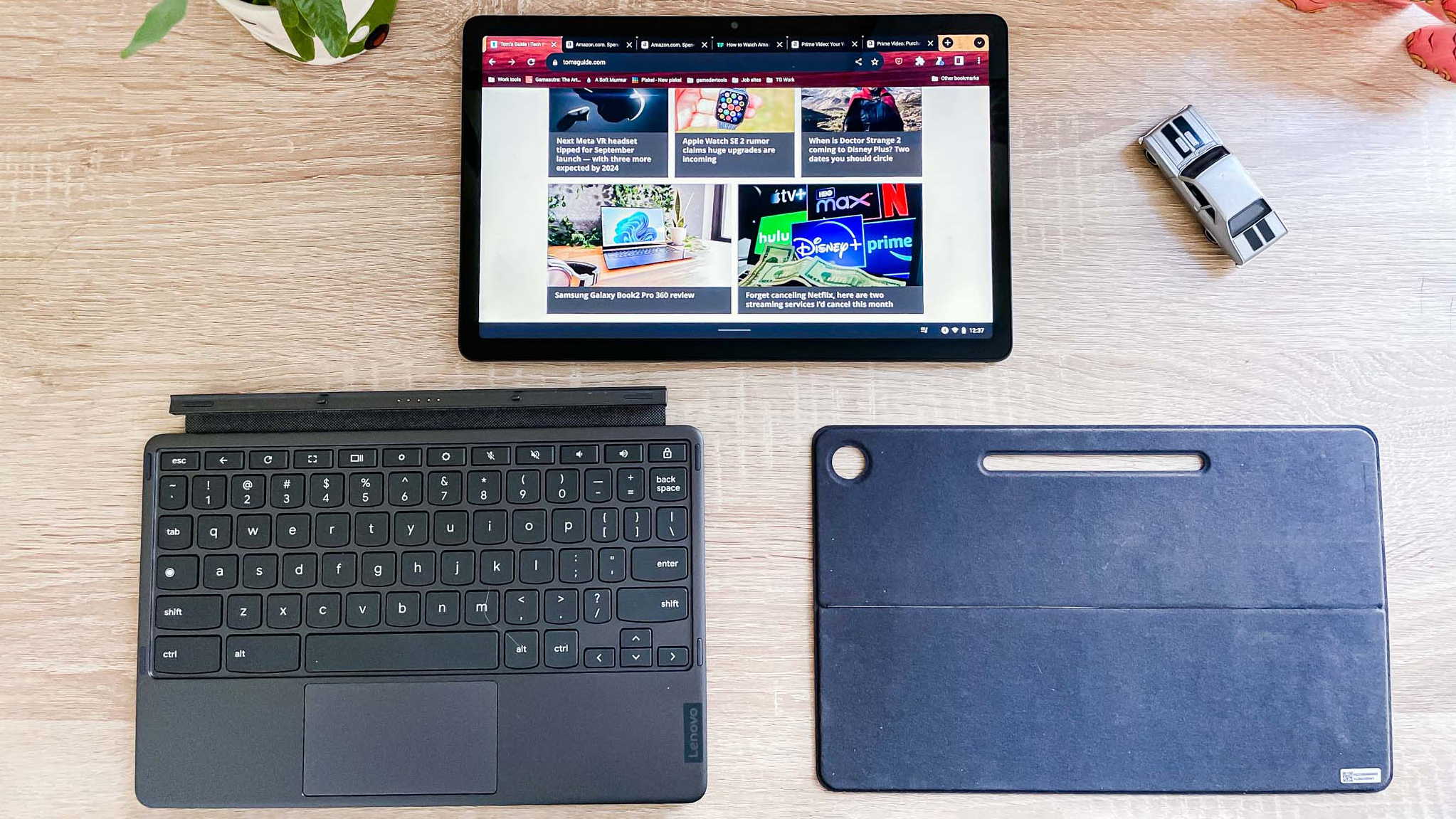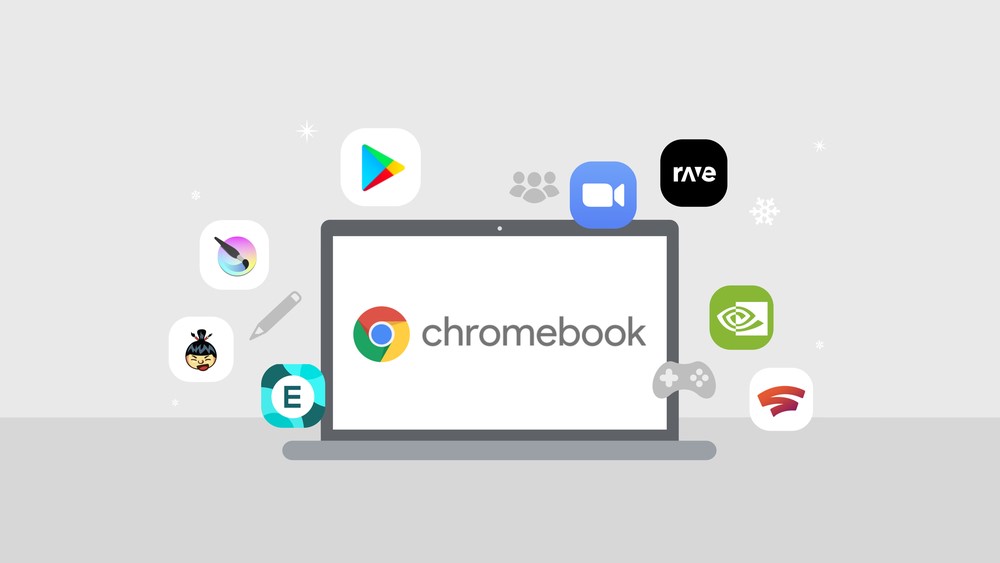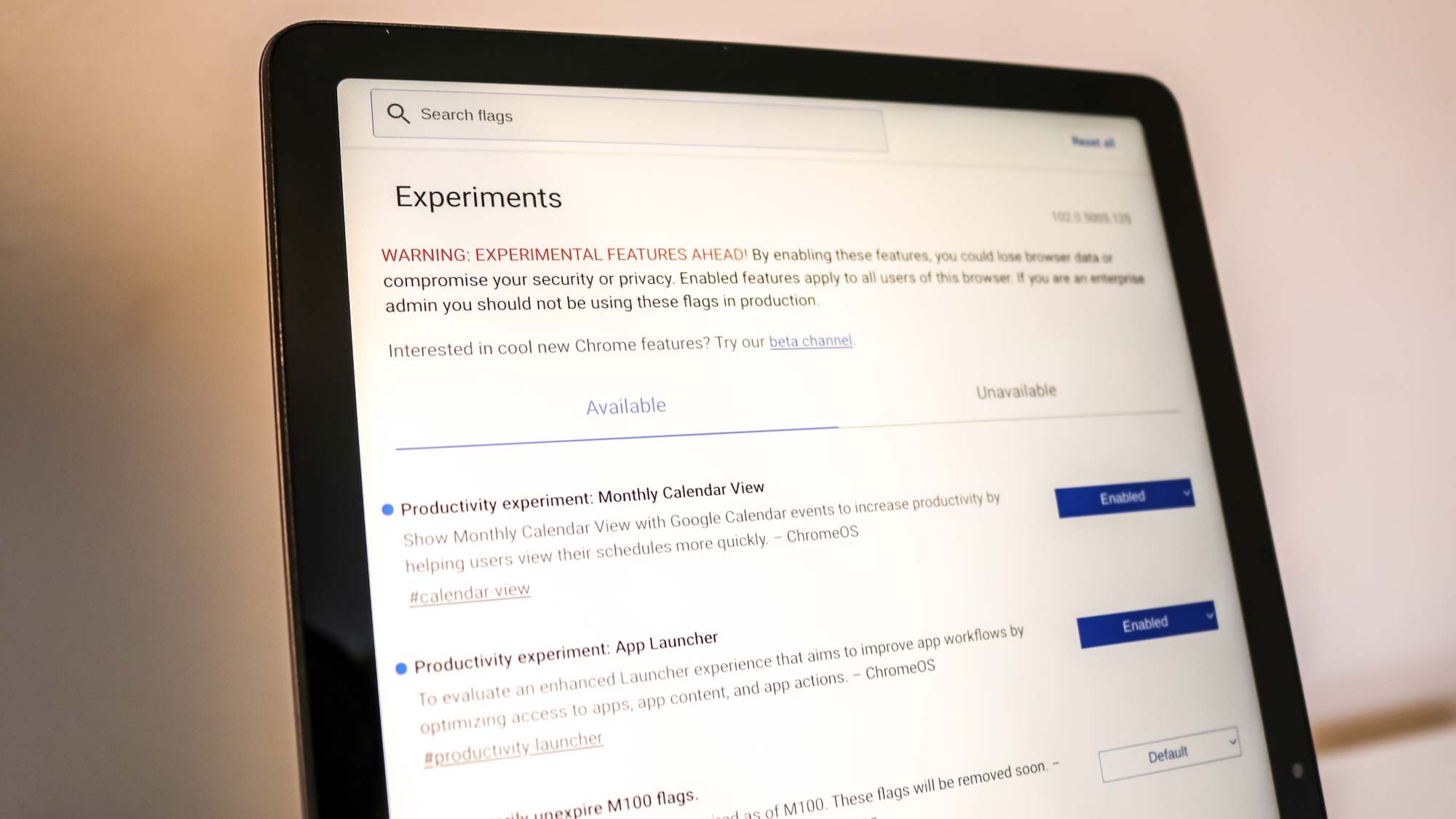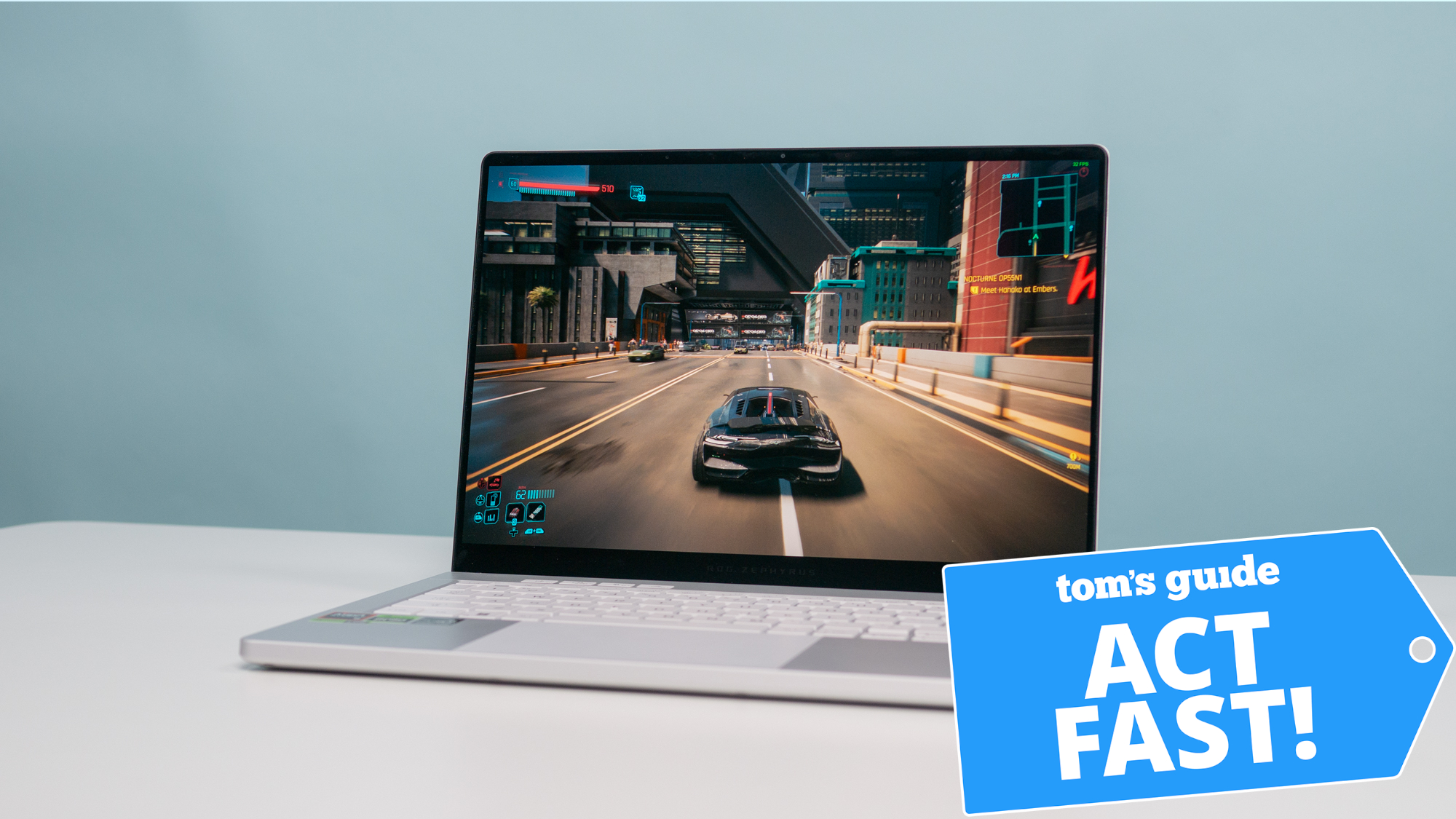I wanted a new Android tablet — but I got this Chromebook tablet instead
This one reason made me switch from Android to Chrome OS

Over the past five years, I’ve been using the Xiaomi Mi Pad 3 as my go-to Android tablet. It served me well even if Xiaomi’s heavily modified MIUI Android ROM left me wanting more. But while my Mi Pad 3 still holds a charge and even runs fairly well, it’s no longer receiving any Android updates, so I could no longer officially run Google Chrome. As a heavy Chrome user, this was a deal breaker, which is why I set out to buy a new Android tablet over Memorial Day weekend. But my search took an unexpected turn.
After taking a look at all of the deals on the best Android tablets, I narrowed my search down to devices from Lenovo or Nokia as I wanted the closest experience to stock Android.
On the budget end I considered the Nokia T20 as I liked that I could expand its internal storage with a microSD card while the Lenovo Tab P11 and the Lenovo Yoga Tab 13 were my mid-range picks. Being able to use the Yoga Tab 13 as a portable monitor was a big draw but its shape was a turnoff which led me to consider the Tab P11 instead.
After leaving multiple devices in my shopping cart and almost hitting ‘proceed to checkout’ on several occasions, it wasn’t until I saw an ad for the Chromebook Duet 3 that purchasing a Chromebook instead of an Android tablet crossed my mind.
Making the switch from Android to Chrome OS
I have to admit this wasn’t the first time I considered opting for a Chrome OS tablet over an Android one. Late last year, the Lenovo 10e Chromebook tablet was on sale for just $99 and I almost pulled the trigger. However, its MediaTek processor, glossy display and bulky size held me back and I’m glad I waited.
The Lenovo Duet Chromebook was one of the best selling devices during the pandemic and for good reason. With 4GB of RAM, a 10.1 touchscreen and a bundled keyboard and case that acts as a stand, it was the perfect work from home device for many users. This year though, Lenovo released the Chromebook Duet 3, which is a worthy upgrade to its predecessor with a higher resolution display, a taller 5:3 aspect ratio and a second-gen fanless Qualcomm Snapdragon 7c processor.

Although I plan on using the Chromebook Duet 3 mainly as a tablet, the detachable keyboard is still a nice thing to have especially when entering passwords or working on Google Docs. Likewise, the magnetic case with built-in stand makes it easy to prop up the device when streaming shows online or watching YouTube videos.
Sign up to get the BEST of Tom's Guide direct to your inbox.
Get instant access to breaking news, the hottest reviews, great deals and helpful tips.
While the Duet 3 has an MSRP of $359, I was able to pick it up for $281 after taxes on Memorial Day. Even though Lenovo’s Memorial Day sale has come and gone, it’s still available at the discounted price of $294 at the time of writing.
If you’re wondering why I decided to pick up a Chromebook to use as a tablet instead of opting for one of the best tablets, updates and convenience were the two most important factors in my decision which I’ll go into detail about below.
OS and security updates straight from Google
Unlike with Chromebooks, device manufacturers are responsible for delivering updates to your Android tablet. This way, new versions of Android are completely compatible with a manufacturer’s own software and everything works as it should. However, this also means that you’ll have to wait for updates if you receive them at all. For instance, my old Xiaomi tablet didn’t receive a single update in the entire time I owned it.
Of the Android tablet makers out there, Samsung is currently leading the charge when it comes to updates. Back in February, the Korean hardware giant announced in a press release that its new tablets will get four years of Android platform updates and five years of security patches. Meanwhile, Nokia has promised that its T20 tablet will get two years of Android updates and three years of monthly security updates.
Things have certainly improved but for security conscious individuals like myself, it’s still not enough, especially if you plan on using your tablet for work in addition to entertainment.
It’s an entirely different story with Chrome OS as Google revealed in a blog post back in 2020 that most new Chromebooks will now get up to eight years of updates.
Another thing that sets Chrome OS apart from Android is the fact that updates are delivered and installed automatically. No need to check for updates manually in settings as they are applied automatically each time you restart your device.
Web apps or Android apps – take your pick

When Chromebooks first hit the scene in 2011, you were limited to using Google Chrome, as their name implies. However, in the years since, Google added support for the Play Store and has even made it easier to run Linux distros and Linux applications.
As a result, you now have a much wider range of software to choose from and opting for a Chromebook over an Android tablet isn’t as hard of a decision as it once was. Keep in mind though that not every app may work on your Chromebook just like on your Android smartphone.
It can be frustrating when you have multiple versions of the same app installed. For instance, my Duet 3 came with the Google News web app installed but I also went ahead and installed the Android version. This led to a bit of confusion as it took me a while to differentiate between the two. Eventually though, I deleted the web app and kept the Android app installed. This wasn’t a perfect solution, as each news story I read opened in a new tab and I did have to delve into the settings to have articles open in the app instead of in Chrome.
Chrome flags to the rescue

Up until last year, Google updated Chrome OS every six weeks. Now though, the search giant has transitioned to a 4-week update cycle, which means you get access to new features even sooner. However, if you want to test out the latest features the Chrome OS team is currently working on, you can also enable experimental flags.
To turn on experimental flags, you first need to open your browser and head to chrome://flags (this works in the Chrome browser on other platforms as well). This brings up a whole list of all the experimental features currently available in Chrome OS along with a warning message. While you can manually search through the flags yourself, there’s also a search bar at the top to make it easier to find what you’re looking for.
For me personally, I wanted a way to alphabetically sort the apps in the launcher so that they appear just like they do in Android’s app drawer. There’s currently no official way to do this on a Chromebook much to the chagrin of Chrome OS users. Fortunately though, the new Chrome OS launcher allows you to sort apps by name and icon color though it also includes a Google Search bar along with notifications for recently opened files at the top.
After clicking enable on the right, I just had to restart my Duet 3 to begin using the new app launcher. I also went ahead and enabled another productivity experiment called monthly calendar view which shows the date next to the time in the app launcher.
A tablet I can use for years to come
Despite the odd quirk here and there, I’m really happy with my purchase and glad I have a tablet that will continue to receive updates all the way until June of 2029. While the battery will likely be dead by then, judging from iFixit’s teardown of its predecessor, it should be fairly easy to replace it on my own. Meanwhile, I plan on using my old Mi Pad 3 to control my smart home and access my security cameras.
If you’re not willing to make the switch to iPadOS with one of the best iPads and are concerned that even one the best Android tablets won’t be updated frequently enough, then it may be worth considering making the switch to a Chrome OS tablet yourself.

Anthony Spadafora is the managing editor for security and home office furniture at Tom’s Guide where he covers everything from data breaches to password managers and the best way to cover your whole home or business with Wi-Fi. He also reviews standing desks, office chairs and other home office accessories with a penchant for building desk setups. Before joining the team, Anthony wrote for ITProPortal while living in Korea and later for TechRadar Pro after moving back to the US. Based in Houston, Texas, when he’s not writing Anthony can be found tinkering with PCs and game consoles, managing cables and upgrading his smart home.
-
GoGoGriffster It seemed the more Android apps I installed one this the slower it got. Even if the Android apps weren’t running.Reply -
CajunMoses Admittedly, even the best Android tablets aren't even in the same league as any iPad. So it's good to see ChromeOS becoming adept as a tablet OS. I expect my next tablet to be a Lenovo Chromebook Duet 3. Can't beat the versatility and price combo.Reply -
regex5783 Whats does the statement below from the article even mean? I've never heard this with chrome android.Reply
"it’s no longer receiving any Android updates, so I could no longer officially run Google Chrome" -
Tom_J Wondering if this chrome book tablet has an end of life like the chromebook laptop I bought. at the time I purchased it I didn’t realize that end of life was a thing with chrome books.Reply -
Moose and Squirrel ReplyTom_J said:Wondering if this chrome book tablet has an end of life like the chromebook laptop I bought. at the time I purchased it I didn’t realize that end of life was a thing with chrome books.
The EOL got a lot longer once Google got the message that folks weren't that excited about a perfectly good piece of hardware suddenly not getting feature and security updates.
Like you, I made a pretty good investment in chrome device hardware, including i7 and i5 based chromeboxes. Pretty beastly, and a decent price since they were a couple of years old.
And then Google stopped updating them. So I went back to Windows, but Chrome OS Flex has my attention for any older bits of hardware. -
Moose and Squirrel You should have bought the lenovo 10e. It actually got down to $79 IIRC from lenovo on ebay.Reply
Most of the complaints, especially about the "chunkiness" were ridiculously overblown. I got a 10e and an amazon fire 10 plus, which has fairly similar hardware. Both are so similar in size and appearance that if they're off, I have to look for the amazon logo on the back to tell the difference. Ports are even in the same places. Only difference is the Fire tab has a microsd slot while the 10e does not.
However, both will work with a fast usb microflash drive. I have a Samsung Fit drive, and that works fine in the usb-c charging port on either. Pretty darn fast and more removable media than one could ever want.
The screen isn't exactly what I'd call "glossy" either.
This was a case where folks who bought a more expensive tablet tried to find reasons why there was a problem with the $99 one so they didn't feel bad about overpaying. I was shocked when I received mine and saw NONE of the reported "issues" with it.
Where else can you find a good performing extra screen with its own built in processing, with android/web/chrome/linux dev all in one for $100?
The 10e as an Education part also has updates for 6 more years, which is actually longer than I'll want to use it.
